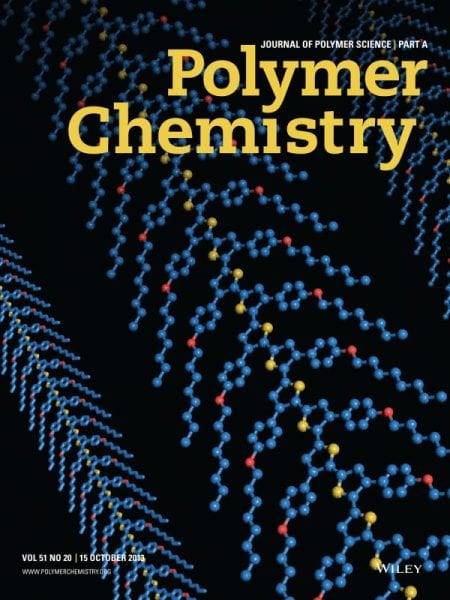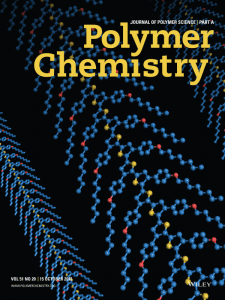Volume 51, Issue 20 of the Journal of Polymer Science Part A: Polymer Chemistry offers three important spotlighted research articles: “Synthesis of Highly Regioregular Poly[3-(4-alkoxphenyl)-thiophene]s by Oxidative Catalysis using Copper Complexes,” “Carbon Nanotubes in Emulsion-Templated Porous Polymers: Polymer Nanoparticles, Sulfonation, and Conductivity,” and “Synthesis of Anionic Amphiphilic Diblock Copolymers of Poly(styrene) and Poly(acrylic acid) by Reverse Iodine Transfer Polymerization (RITP) in Solution and Emulsion.”
Poly(3-alkylthiophenes) are widely studied for potential organic electronic applications due to their wide delocalization of π electron density. The regioregularity of these materials is critical as only head-to-tail connection sequences allow energy stable planar conformation of the backbone providing for the delocalization. Previous syntheses varied between metal-catalyzed crosscoupling of thiophene monomers which provide highly regioregular polymers in good yields, but are expensive and complicated and oxidative coupling which is simple and inexpensive, but provide materials with lower regioregularity. Laura Ricciotti and collaborators developed a synthetic procedure to prepare poly[3-(4-alkoxyphenyl)thiophene]s based on oxidative coupling catalyzed by copper (II) complexes. This method delivered the simplicity and cost-effectiveness of oxidative polymerization with extremely high regioregularity.
Sulfonated polymers are used for a variety of applications such as ion exchange resins, reaction supports, and membranes for separation, filtration, fuel cells, and electrochemical devices. Carbon nanotubes have been added to polymers to enhance the electrical or mechanical properties. Michael S. Silverstein and colleagues synthesized polystyrene-based carbon nanotube-filled emulsion template porous polymers. Combining sulfonation and carbon nanotubes improves proton conductivity of polymeric membranes, enhancing properties without creating electronic percolation pathways. Using high-internal phase emulsions allowed for hydrophobic-hydrophilic bicontinuous polymer systems.
Styrene and acrylic acid amphiphilic block copolymers may change their physical parameters in response to pH, ionic strength, or temperature. These polymers are used for applications such as gene therapy, drug delivery, emulsification, and particle stabilization. In order to polymerize in larger scale, researchers are looking to controlled radical polymerization (CRP) techniques. Patrick Lacroix-Desmazes and associates devised an innovative technique coined reverse iodine transfer polymerization (RITP). Investigators report the unprecedented homopolymerization of tert-butyl acrylate and block copolymers of styrene and tert-butyl acrylate by RITP in both solution and emulsion. The results of this study illustrate how molecular iodine can be used to generate transfer agent in situ to control the polymerization.


















